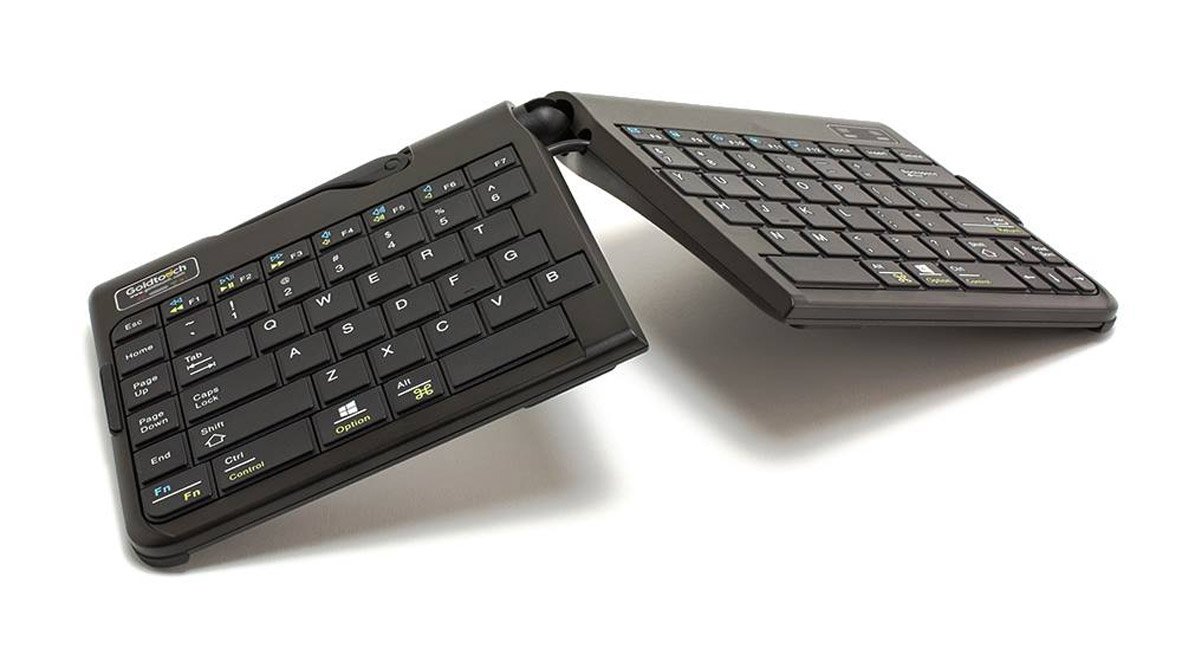For the better part of my career, I’ve had to pay attention to desk ergonomics. (Don’t naively work 14-hour days for months in your first job, folks.) Keyboards, mice, chairs—I’ve tried a lot.
I took one key component in my setups for granted: the humble keyboard tray. Having one at the office kept my mouse and keyboard at the right height for relaxed shoulders and elbows with proper angles. When the pandemic hit, I gave up my office desk and its keyboard tray and instead engaged in awkward workarounds. (Keyboard in my lap? Sure, why not. Close enough.) But eventually I started leaving the keyboard on the desk rather than having it on my lap (it’s weird balancing a tented keyboard on one’s thighs) and it was the wrong height for my needs. I started developing periodic shoulder pain.
Looking for a new keyboard? You should check out our roundup of the best wireless keyboards available today.
I just lived with it. I couldn’t drill holes in my table, so a keyboard tray seemed out of the question. I did know that no-drill keyboard trays existed, but my recollection was of limited options. As I remembered them, they weren’t very sturdy, didn’t slide back under a desk, came in ugly brown woodtone colors, and—most damning—had low clearances. Designed for standard keyboards and mice, these cheap trays didn’t have enough room between the bottom of the desk and the tray for my tented Goldtouch keyboard.
Well, it turns out that you shouldn’t impose your memory of the mid-to-late 00s on the current day, especially when it comes to the availability of useful overseas products on Amazon.
A whole array of useful no-drill keyboard trays exist and they’re affordable. You all should have seen my face when I learned this—after finally getting a table compatible with a standard drill-mounted keyboard tray, I stumbled upon all the no-drill ones simply by typing “keyboard tray” into Amazon’s search box. (An excited if vehement set of curse words might have tumbled out of my mouth.)
To my surprise, these models attach easily with clamps—some with big, sturdy ones—and include features like sliding, pivoting, and/or pitch adjustments. The only shortcoming of these no-drill trays is a lack of higher-end models with the ability to raise or lower the tray, as you’d find on the drilled side. And, as for aesthetics, black and white colors are both easily found. (Begone, ugly mid-90s vibe.)

The options were so good—for just $50 to $70 dollars, too—that I ended up buying a no-drill keyboard tray rather than one with a standard mount. The advantages were strong: I didn’t have to worry about (in)accuracy while drilling holes. I could reposition the tray if I ever changed my monitor configuration or swapped desks. And I could get the necessary clearance for my ergo keyboard without having to spend $100 or more for the kind of drilled-in tray I wanted.
The model I bought was a $60 Japanese offering with a single clamp that allows 360-degree pivoting. Unlike other keyboard trays that use two smaller clamps and slide out, this one sits fully in front of the desk, guaranteeing I won’t have any height or depth conflicts with my tented keyboard and roller mouse combo. When I’m not using the tray, I just spin it around so everything’s tucked under the desk. And the shoulder issues I’d developed during the pandemic have calmed down and mostly disappeared.
So, if you’ve been at your desk as often as I am and have been suffering from some ergonomic issues, this kind of keyboard tray can up your comfort considerably. It’s very low commitment with extremely fast set up, which leaves you more time to contemplate other ways of upgrading your work-from-home arrangement.



